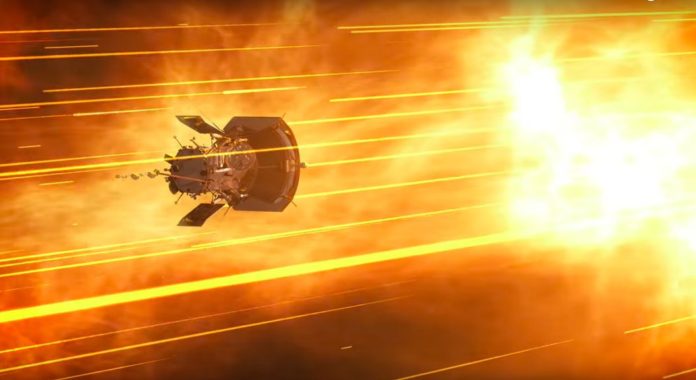All set for August 11 (after another delay) is the launch of the much awaited, and much talked about, Parker Solar Probe. The probe will allow scientists to get a closer look at the Sun than ever before and will be an exciting event, particularly for those involved in the project.
In a recent press conference held at NASA’s Kennedy Space Center, Nicky Fox, Parker Solar Probe’s project scientist, and Alex Young, associate director in the Heliophysics Science Division at NASA’s Goddard Space Flight Center, spoke about the goals of the mission as well as some of the technology behind it.
The Sun is an extremely complex object that’s constantly evolving. It’s a magnetically active star that continually sends all kinds of magnetized material flying through the solar system. Some of this energy bursts out with such force that light and particle radiation is sent flying through the atmosphere causing temporary disruptions such as scrambling radio signals near Earth.
This kind of solar activity is what we call space weather and the key to understanding it all lies in understanding the Sun first. “The Sun’s energy is always flowing past our world,” says Fox. “And even though the solar wind is invisible, we can see it encircling the poles as the Aurora, which is beautiful – but reveals the enormous amount of energy and particles that cascade into our atmosphere. We don’t have a strong understanding of the mechanisms that drive that wind towards us, and that’s what we’re heading out to discover.”
The Parker Solar Probe spacecraft will carry a whole range of instruments that are designed to help scientists study the Sun more intently. From this mission, scientists are hoping to answer three fundamental questions about the Sun:
- The mystery behind solar wind acceleration that’s emitted from the Sun
- The secret surrounding the extremely high temperatures of the corona
- The mechanisms involved in the acceleration of solar energetic particles
To answer these questions, the Parker Solar Probe relies on four separate suites of instruments:
- The FIELDS Suite: this measures the magnetic and electric fields surrounding the spacecraft. It can also capture waves and turbulence from within the inner heliosphere and does so with such high resolution.
- The Wide-Field Imager for Parker Solar Probe (WISPR) instrument: this is the spacecraft’s only piece of imaging equipment. Its job is to take images of the various ejecta from the Sun.
- The Solar Wind Electrons Alphas and Protons Investigation (SWEAP) suite: this suite uses two instruments together in which to gather data. What this suite does is it counts as the most abundant particles in the solar wind (i.e. protons, electrons, and helium ions) and measures properties such as density, velocity, and temperature.
- The Integrated Science Investigation of the Sun (ISIS) suite: This suite is responsible for measuring different particles across various energies.
It’s taken in the region of sixty years to get to where it is now, ready to take flight. And only in the past few decades, with thanks to the advancement of technology, has it come far enough to make the Parker Solar Probe more than just a plan. Three main breakthroughs are the key to Parker’s success. They are the advanced fault management system, the solar array cooling system, and the cutting-edge heat shield.
Using data from each of the seven sensors located around the edge of the shadows cast by the heat shield, Parker’s fault management system prevents the spacecraft from problems when it’s out of contact with those on Earth. If a problem is detected it will automatically self-correct its course to keep it out of danger while out of communication with Earth. The heat shield on-board the spacecraft is called the thermal protection system (TPS). And although it’s nearly 8-feet in diameter it only weighs around 160 pounds which is pretty good as the Parker Solar Probe itself is pretty small (about the size of a small car).
The only thing the Parker Solar Probe needs now is energy. “The launch energy to reach the Sun is 55 times that required to get to Mars, and two times that needed to get to Pluto,” confirms Yanping Guo from the John Hopkins Applied Physics Laboratory, designer of the mission trajectory. “During summer, Earth and the other planets in our solar system are in the most favorable alignment to allow us to get close to the Sun.”
More News to Read
- Breakthrough in Electron Microscopy Sets World Record for Image Resolution
- How Drones are Changing the World as We Know It
- Engineers Develop New System for Signaling Out Certain Sounds in Music Videos
- Scientists Develop New Technique to Study Antibiotic Resistance
- New Laser System Upgrade Allows Scientists to Explore Fusion Energy and Plasma Physics Like Never Before

